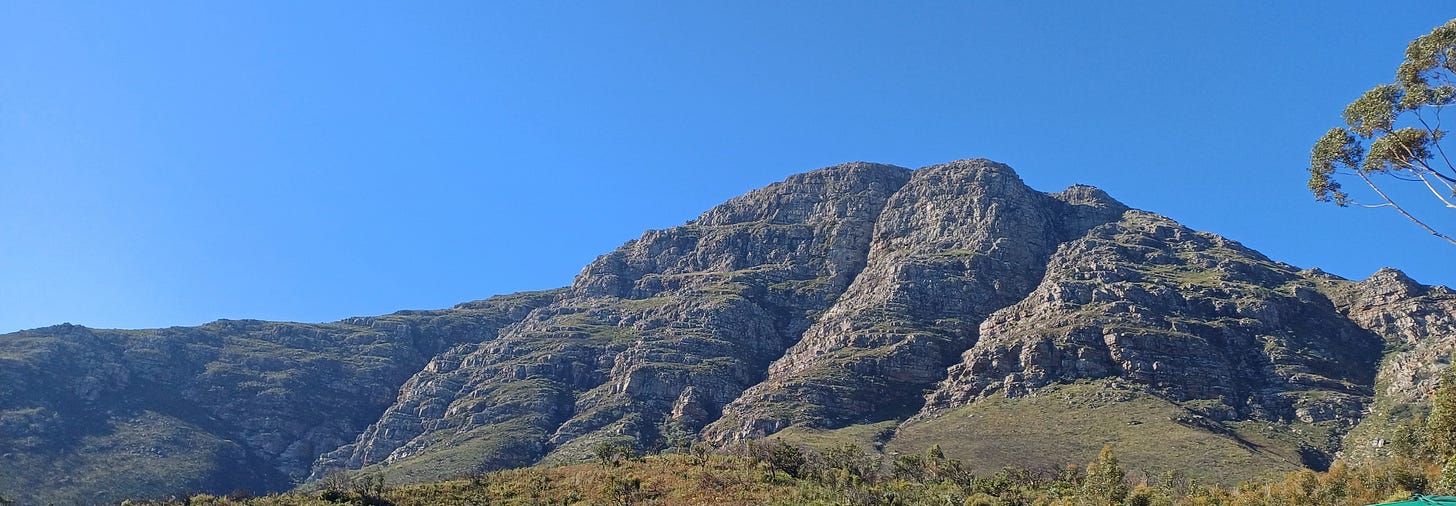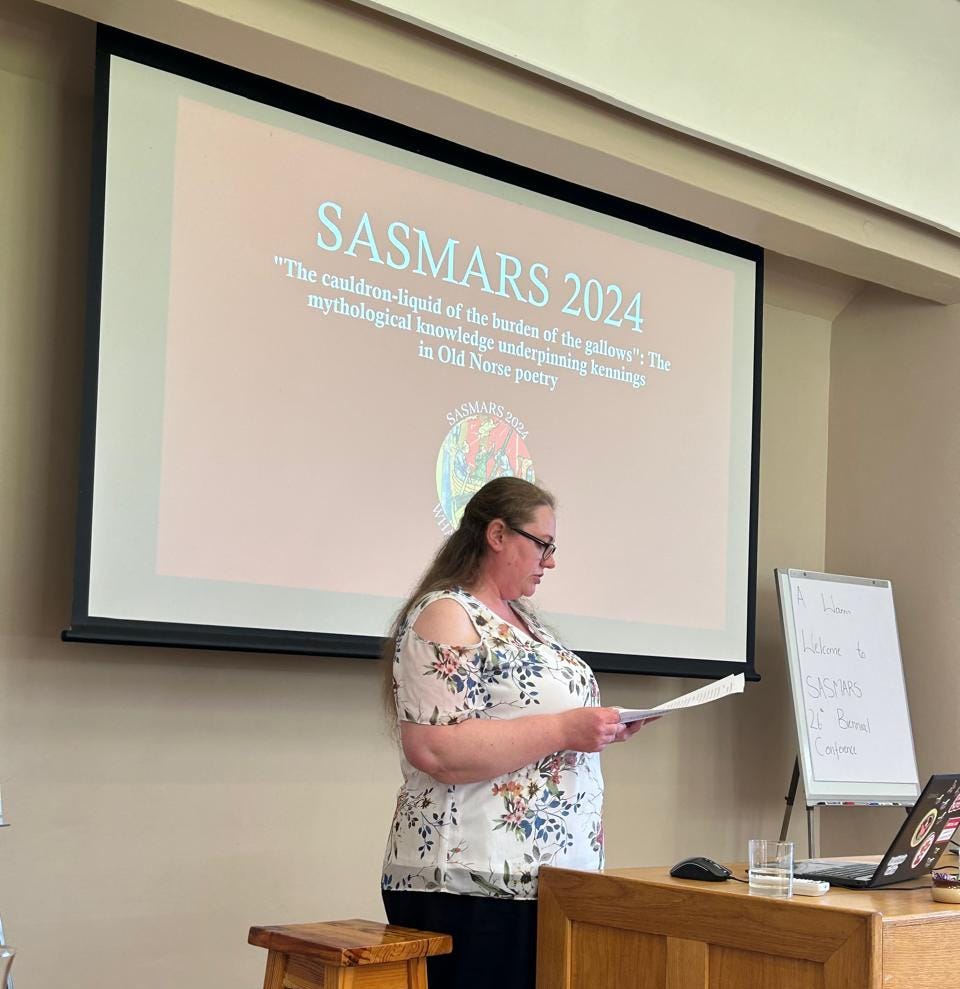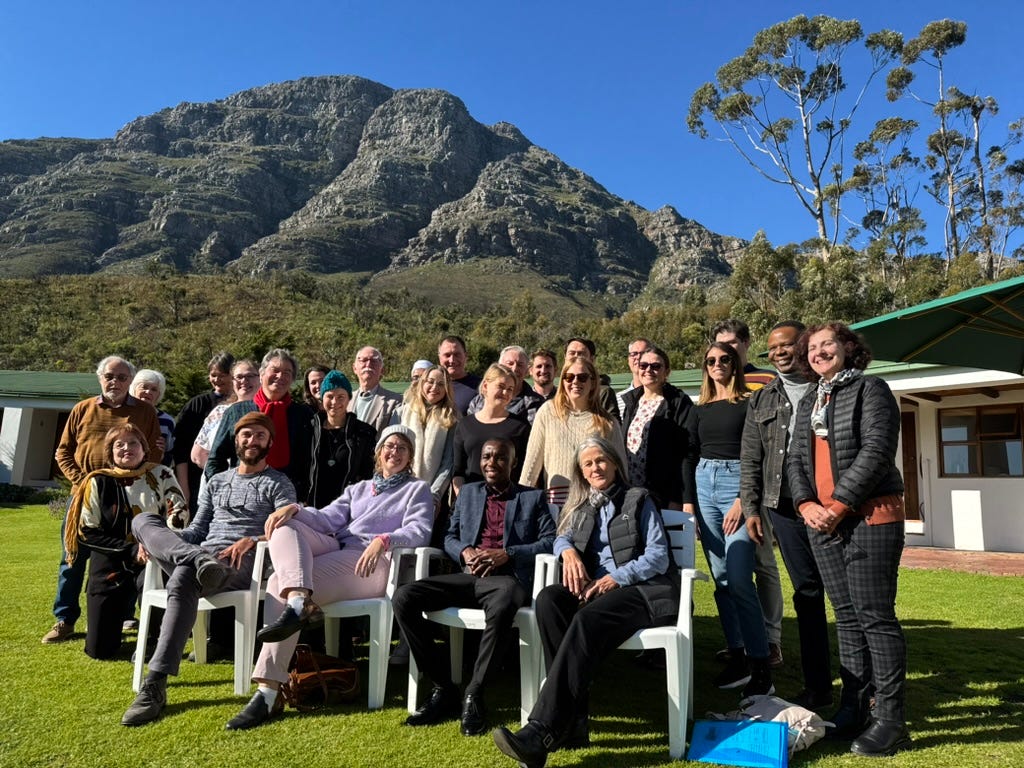After the Conference, Fiction Edits and Worldbuilding, and (Re-)Building Sites
Or, some writing updates and what else I’ve been up to
Hello again Fellow Adventurer,
I’m writing this from a Johannesburg that’s waking up after a very beige, veldfire-riddled highveld winter – and writing nearly a month after the SASMARS Conference1!
The SASMARS Conference
I still have no idea how, but I managed to finish my paper in time for the conference and I even had a PowerPoint presentation (of four slides, but still)! The Conference was absolutely wonderful even though it was also overwhelming and is also the reason for not getting out another newsletter before now. Somehow, I always think writing the paper and sorting out the logistics for the conference takes less time than it actually does2, and that I’ll have more time to devote to it than I actually do.
However, I did have a lot of fun, met awesome people, talked with awesome people, listened to fascinating papers, and got renewed inspiration.
Overwhelming, yes, but in the best possible way. And it’s always nice when other people also find the obscure things you find interesting, interesting as well. I also have even more books and texts I want to read now.3
Talking about books
While I usually take The Lord of the Rings to read on flights,4 this time my backpack would have none of it. I ended up taking along a collection of Jorge Luis Borges’s short stories – which only just fit. As I hadn’t read any of them in a couple of years, it was a joy returning to them. One of my all-time favourite short stories remains “Tlön, Uqbar, Orbis Tertius”.5 Strangely enough, I’d completely forgotten about his story containing references to kennings6 until one of the other delegates mentioned it during the Q and A session. *X-Files theme starts playing.*
The next conference will be in 2026 and I’m already pondering what my paper will be about.7 Perhaps this time I’ll finish it well before the conference and not two days before it starts...
Getting stuck (back) into writing and editing
Along with my renewed inspiration, I have finally gotten back into editing Where the Stars Used to Sing and I’m finally feeling as if it’s going into the direction I want it to go. Part of the problem with the collection, is that it didn’t start out as anything more than me trying to write a flash fiction story every week. It was only after writing a couple that I realised that they all seem to have similar themes and recurring motifs and that I started to think about putting them together in a collection. Plus, the title popped into my head and I really liked it.
Then Life Stuff8 happened, and all my editing plans went out the window. However, the space I’ve given the stories means that I’m better able to do major overhauls as well as more minor edits. And the collection’s title will remain the same, so at least the cover doesn’t need changing.
I’ve so far finished major edits of three of the stories, the most recent of which is “A River Once Ran Here”, and I’ve just started on the edits for “And She Danced with the Moonlight”. For “River”, I did quite a bit of work on the lore of the world and adding in a layer of extra backstory. I’ve also added some more place names in the language9 I’m using for the book. There is some Akkadian influence – sort of – in the language. That is to say, none of the Akkadian grammar is used, but some of the vocabulary I’m using take inspiration from Akkadian. This is made a lot easier thanks to an online Akkadian dictionary by the Association Assyrophile de France. Why Akkadian of all things, you might wonder. Unfortunately, I don’t have an answer. I must’ve been reading something about archaeology or history10 when I thought about using it. Brains are weird that way.
(Be sure to check out this fascinating Wired article about a brain connections map – “This Is the Most Detailed Map of Brain Connections Ever Made”)
As for the names I’m using in “A River Once Ran Here”, the names refer to said river (Eshmarashja), a mountain (Surusjadu), and woods (the Musjianu Woods). I hope that I’ve managed to add it in and use it in a way that feels natural in the story world. Although the names are chosen with very specific meanings in mind, you don’t have to know what the name means when reading the story. For example, the river means “Silver light”, the mountain simply “white mountain”, and the woods “Night Oak Woods”. Adding oaks to the story, of course, brings with it a lot of space for folklore and makes it easier to link it with other stories like “Stars in the Oak Tree”.
Part of the fun of writing these types of stories (speculative fiction of some or other sort) is adding layers and bits and pieces in the background. I do think that it gives the sense of a deeper story world and that the story world doesn’t simply begin and end with the first and the final word.
As I finish editing the stories, I’m going to post them as separate posts here on the Substack, which brings me to…
A redesign
You’ll soon see (when you’re on the site, not on the email) additional sections for fiction, non-fiction, etc. However, you won’t all of a sudden be inundated with emails; posts and stories will only move over to the relevant section. This change will (I hope) make it easier to navigate not only between posts, but also between my different writing projects.
The only outlier (at the moment), is that I’m putting all my Afrikaans stuff (current and planned fiction, non-fiction, etc.) under the “Afrikaans” section; although it will keep its title (Hersenskimme en skadubeelde) once you open the section.11
Another creative endeavour
Thanks to a conversation about GPS and how it works at the SASMARS Conference (it was over breakfast and I can’t remember how the discussion ended up there), I got an idea for a short story that leans more towards fantasy than scifi. I’m busy playing with the idea in the back of my mind, but it’s one that I’ll need to plan and not simply discovery write. As it’s a standalone, I’m going to try to get it published. But, first, I need to finish the edits for Where the Stars Used to Sing!
Until next time, stay safe,
Carin
That is, the Biennial International Conference of the Southern African Society for Medieval and Renaissance Studies.
The Ultimate Spreadsheet of Knowledge (the file’s actual name) helped so much to keep all the information straight, containing everything from flight schedules to dietary requirements and paper titles. I saw with the previous conference that trying to use more than one spreadsheet just didn’t work.
I’m sure my TBR pile will be visible from space very soon.
Although that sentence makes it sound like I fly a lot more than I actually do.
At primary school (grade 6 or 7, probably) one of the prescribed books was Stories from Different Genres. While it doesn’t have the most interesting title of all time, it contained many classic short stories that left a huge impression on me, including “The Lottery” by Shirley Jackson, “Harrison Bergeron” by Kurt Vonnegut, “The Quest for Blank Claveringi” by Patricia Highsmith, and “The Veldt” by Ray Bradbury”. Apparently I’ve always liked the weirder, darker stories.
My paper was about kennings and titled “’The Cauldron-Liquid of the Burden of the Gallows’: The Mythological Knowledge Underpinning Kennings in Old Norse Poetry”.
There’s no theme yet, so it really is just me thinking ‘what about something about some type of textile or textile production or trade or something’ without being able to whittle it down more than that.
The type of “Life Stuff” you need to use capital letters for.
I’ve mentioned this language before and it really is much more of an “artistic language” than a conlang.
Or mythology, to be honest.
Believe it or not, I am still working on Porselein.











